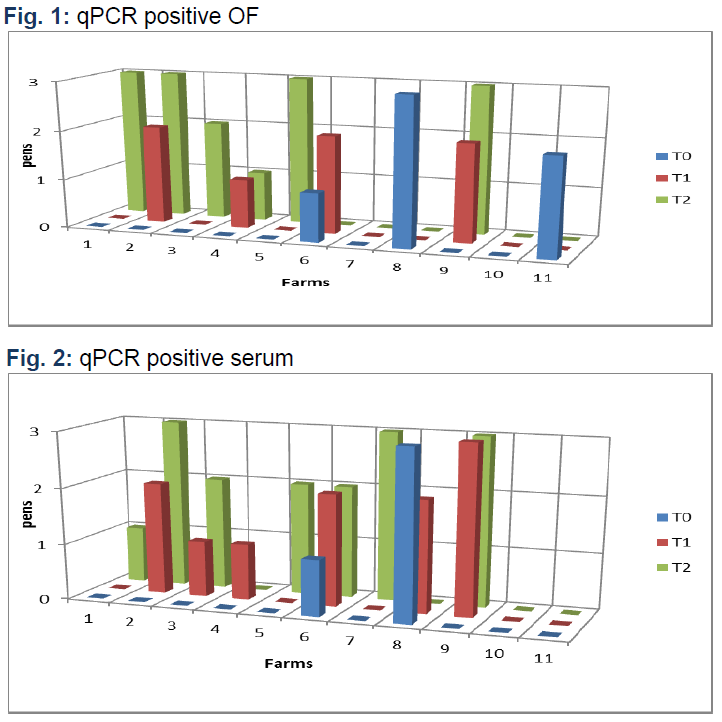



Oral Fluid Sampling as a Tool for PRRSV Surveillance in Gilts
Gilts are a potential source of porcine reproductive and respiratory syndrome virus (PRRSV) and their introduction into breeding herds is a pivotal step of disease control, write Giacomini E et al.Data on the onset of PRRSV infection in replacement gilts during the acclimatization period would be useful for PRRS control strategy. This study was aimed to compare PRRSV detection and PRRSV-specific antibody responses in Oral Fluid (OF) versus serum samples in order to determine whether pen-based OF sampling could be used as a tool for PRRSV surveillance in gilts in breeding herds in Italy.
Materials and Methods
The study was carried out in 11 breeding farms endemically infected with PRRSV in a high pig density area in Italy. Sows had been vaccinated with PRRSV modified-live virus and inactivated vaccines in 4 and 2 farms, respectively. No vaccines were used in gilts in the other 5 farms. OF was sampled in 3 pens with 5 animals each. The gilts were also bled individually to obtain serum samples. Samplings were performed at the beginning of the acclimatization period (T0) , at 4 (T1) and 8 weeks (T2) later. Sera and OF were analized by a PRRSV real-time quantitative reverse transcription polymerase chain reaction (qPCR) and by a PRRSV-specific serum antibody ELISA. PRRSV IgA and IgG Ab assays were used only in OF A total of 495 sera and 99 OF samples were analyzed.
Results
In one out of 11 herds, all the gilts were completely PRRSV-negative by qPCR, and Ab-negative in the assays on serum and OF samples at the three time points. In the other 10 farms, animals showed PRRSV infection At T2, serum and OF samples of the 10 farms were Ab-positive, only 6 of them being also qPCR- positive. IgA and IgG Ab assays on OF were negative at T0 and positive at T2 in 7 and 3 farms, respectively. The concordance of qPCR results on OF vs sera was 96.9%, 93.9% and 69.7% at T0, T1 and T2, respectively. At T2, in 7 samples qPCR was positive in OF and negative in sera. The concordance of OF vs serum Ab assays was 87,9 % at T0, 84.8 % at T1 and 93, 9% at T2. A comparison of antibody responses in qPCR-positive vs. negative oral fluid samples showed higher S/P ratios in qPCR-positive oral fluid samples (mean S/P 4,18 vs. 3,67).
Conclusions and Discussion
The concordance of qPCR and antibody ELISAs in gilts was high at all the time points (T0, T1 and T2). The prevalence of PRRSV qPCR positive samples in OF was greater when compared with serum at T2. Although the approach should be validated in further field trials, the results of this study showed that gilt oral fluid samples could provide an efficient and sensitive approach to PRRSV surveillance in infected or presumed-negative pig breeding herds.
Giacomini








.PNG)


